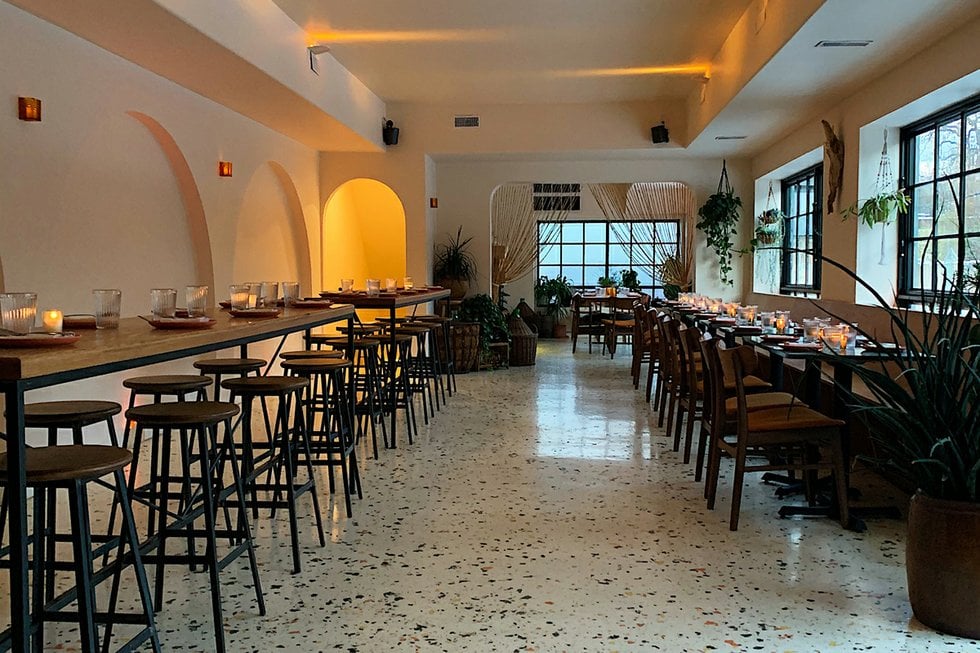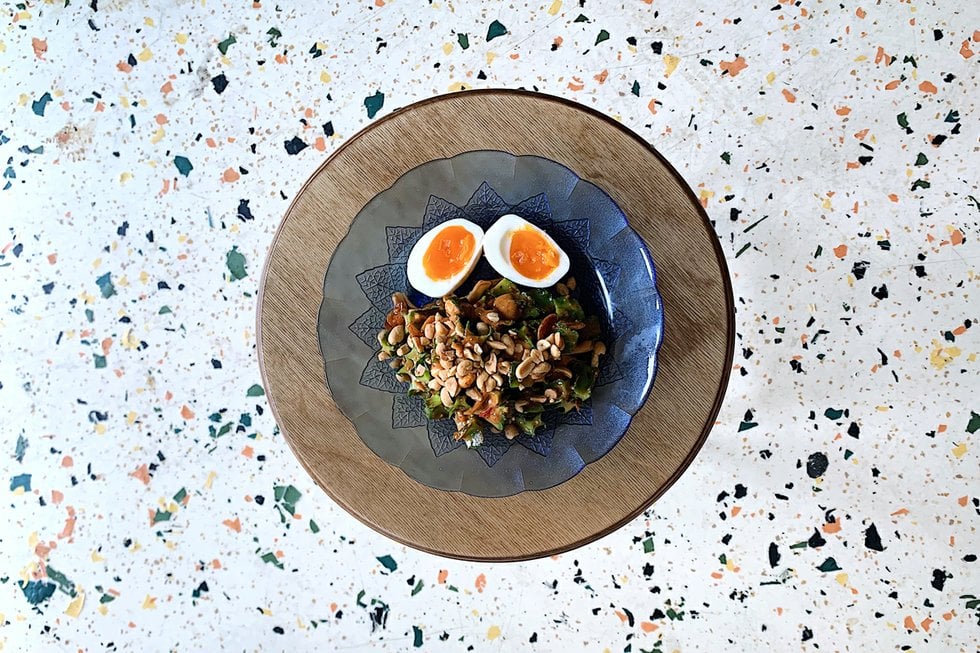
READ MORE: COVID-19: Toronto restaurants now offering delivery or takeout
On most nights, Favorites on Ossington is a blur of activity: Charcoal smoke wafting from the open kitchen, wine glasses clinking, heels on terrazzo floors.
Today, chef Haan Palcu-Chang is in there alone.
“That’s all we can afford right now,” the chef says over the phone.
Favorites’ staff have all been temporarily laid off, but the chef is still trying to make rent for the restaurant by cooking up a limited slate of takeout and delivery options, something the buzzy Thai spot had never had any intention of trying before.
“We didn’t want to offer a service that was going to give people a crappier version of our food,” he said. “And that was fine when we were busy – but now we have no choice.”
As public worry mounted over COVID-19, Toronto’s restaurants were left weighing the difficult decision to stay open, or close and leave staff – who, in the service industry, tend to work for hourly wages – without pay.
On Monday, March 16, the choice was made clear by the city’s chief medical officer, Dr. Eileen de Villa, who asked in a press conference that all bars and restaurants stop dine-in service at midnight. Takeout and delivery services were still encouraged, she added, and noise bylaws would be relaxed in order to deal with increased delivery traffic. That order was echoed hours later by provincial officials.
de Villa has warned she could potentially issue orders to close restaurants if they do not comply under Section 22 of the Health Protection and Promotion Act. Fines as high as $25,000 could follow, she said.
In recent weeks, as public warnings have spread around the city about the spread of the virus, many restaurants have made moves to adopt new takeout and delivery programs, as a way to bring in enough money to cover bills and avoid further layoffs.
It’s by no means a perfect solution: Even in restaurants that are staying open to serve delivery, dining room closures still mean sending front of house staff home. While some laid-off workers will be able to claim EI, no other protections have yet been announced by the government.
Palcu-Chang added he encouraged staff to get on EI as early as possible, suggested alternate gigs, and offered to cover costs for a few of them – “but I can only do so much, since I don’t know when this is gonna end,” he said.
“People are gonna adapt. It’s gonna happen. But is it gonna happen before a massive amount of restaurants go under? That’s the concern.”

Graham Smith/Favorites
Favorites never intended to add takeout to their menu – but with the dining room closed and a staff of one, that’s changing.
In the interim, Palcu-Chang is cooking up a handful of dishes that travel well for a takeout menu, and is working on bringing back some new items and rolling out a meal plan concept as well. Takeout app Ritual offered to waive setup fees and commission for three months for the restuarant, and Palcu-Chang is also trying to get on UberEats – though he says that after Uber takes its roughly 30 per cent cut of each meal, it’s barely worth it.
(UberEats has opted to waive delivery fees for users within the city of Toronto, a move that’s been applauded by diners, though restaurants are still paying out the regular amount. No word yet on how the promotion affect the service’s couriers.)
Other restaurants are following suit, from chef-driven spots like Aloette (who rolled out Ritual and Doordash support this week) to neighbourhood-y joints like Tinuno, who are offering free in-house delivery within a 2-km radius of the restaurants. Le Phenix, the revamped temporary version of Chantecler that sprang up after a fire at the shop last year, is about to launch in-house and app-based delivery of a new menu that includes baguettes, tartare, soups, roast chicken and more.
Meanwhile, restaurants that feature a retail component, like Famiglia Baldassarre, Good Cheese and Cote de Boeuf, have already begun focusing on that model.
But many restaurateurs say these new measures are ultimately stopgaps – and in some cases, they’ve already fallen through.
On Dundas West, The Good Fork toyed over the weekend with expanding their “pantry” program of selling ingredients and sides (including house-cured smoked salmon, whipped feta and pancake batter) to go. But by Monday, after a week that saw sales dip 50 per cent at brunch and 80 per cent at dinner, they opted to close their doors before word came down from the city.
Bloor West retaurant Alma unveiled a new takeout option over the weekend before ultimately deciding to call it quits. And still others, like Danforth brunch and dinner spot City Betty, considered sticking it out with delivery – but ultimately opted to close instead.
“After seeing places shut down completely, looking at the costs of labour and food, we decided that it would be really hard, especially as everything keeps changing,” City Betty chef-owner Amanda Gatien told NOW in an email.
Realistically, Palcu-Chang says, without high customer volume and alcohol sales, Favorites – and other restaurants – won’t make money until dining room opens again.
“If we do survive this, which is by no means certain, we’re gonna be pretty well situated to retain business,” he says.
“But it’s all about if we can make that gap – if we can survive the bridge to normalcy.”
READ MORE: COVID-19: Toronto restaurants now offering delivery or takeout
@nataliamanzocco












